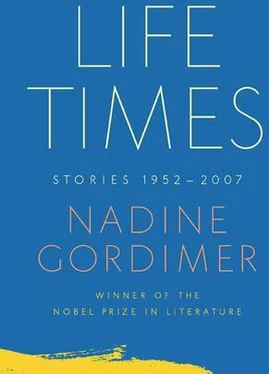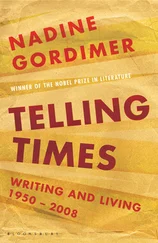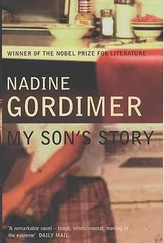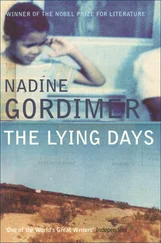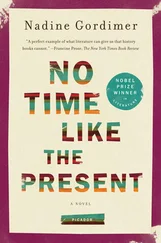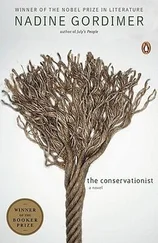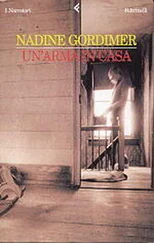The Prime Minister had been scheduled to make a major speech in a farming constituency where a by-election was to be held. Instead of having to counter dissatisfaction with his agricultural policy, he was able to call upon support from all sections of the community to meet the threat from beyond our borders that was always ready to strike at our country. He did not need to, nor did he mention this latest attack on its vitals, which had happened only three days before the speech; his face, composed somewhere between a funeral and a stryddag , was enough to put complaints about beef and maize prices to shame.
The release of official statements lags behind what people in the know come to know. A good journalist must have his contacts in both the regular police force and the security police. A manhunt was on, routine roadblocks and a close watch on all airports and border posts were being maintained: there was to be no further information supplied to the public while important leads were being followed. The important leads — everyone knew what those were. Another routine in such cases: a number of people, mostly blacks, had been detained even more promptly than normal power supplies could be restored, and were under interrogation, day after day, night after night, during which a name extorted by an agony of fear and solitude, and if that didn’t bring results, by the infliction of physical pain, might or might not be that of someone who would attempt to blow up a power station. John Vorster Square and its suburban and rural annexes were working at optimum capacity. But Sergeant Marais Chapman had been taken off interrogation duty and sent with a couple of black security men to question people within a cordon of the area in which the towers of the power station were the veld landmark. One of the good journalists knew, without being able to publish a word in the meantime (the story was on file) that the police had been to the Indian at the store, who did not recognise any of the photographs they showed him, and that they had visited all plots and farms, questioning black labourers. It was in the course of these visits that they found an empty house, a deserted yard, at Plot 185 Koppiesdrif, where an old man with some story about being there to weed his mealie patch told them this was Baas Kleynhans’s place but the oubaas was dead and the boys that worked there now, they had gone away two weeks ago, and the white people who were living in the house, last week he saw the missus but now this time when he came to weed his mealies, they were gone, too. The old man gave the name of the baas who looked after the farm now Baas Kleynhans was dead. So Naas Klopper — out of nowhere! — found the police sitting in Klopper’s Eiendoms Beperk, waiting to ask what he could tell them about the Kleynhans place.
The journalist interviewed him shortly after. He wanted to talk to Klopper’s wife, as well, because Klopper let slip that the white couple had ‘taken us for a ride’, they’d even had (the refreshment grew in proportion to the deception) a meal at the house — his wife had felt sorry for the girl, who was pregnant. But Mrs Naas did not want to give an interview to the English press; they would always twist in a nasty way something innocent that Afrikaners said. She did, however, talk to a nice young man from one of the Afrikaans papers, serving him coffee and those very same buttermilk rusks she’d baked and taken along to the young couple just after they’d moved in. She described again, as she had to the police, what the black looked like who had come from the yard, for a moment, with a tool or something (she couldn’t quite remember) in his hand. Just like any other black — young, wearing jeans that were a bit smart, yes, for a farm boy. He hadn’t said anything. The white girl hadn’t spoken to him. But she was flustered when Mrs Naas — out of kindness, that’s all, the girl said she was a foreigner — remarked she hoped the boy wasn’t some loafer who’d come to the back door. Rosser their name was. They seemed such polite young people. Whenever she got to that point in her story, Mrs Naas was stopped by a long quavering sigh, as if somebody had caught her by the throat. She and whomever she was telling the tale to would look at one another in silence a moment; the journalist was not excepted. Something alien was burning slowly, like a stick of incense fuming in this room, Mrs Naas’s split-level lounge, which had been so lovingly constructed, the slasto fireplace chosen stone by stone by Naas himself, the beasts whose skins covered the bar-stools shot by him, the tapestry made stitch by stitch by Mrs Naas in security against the rural poverty of the past and in certainty that these objects and artefacts were what civilisation is.
Mrs Naas — being a woman, being artistic — notices things more than a man does, Naas Klopper advised the police. It was Mrs Naas’s description of the girl and the young man that they took back to compare with their files and photographs at John Vorster, and to use in the interrogations that, if they couldn’t always wring words from the obdurate (and sometimes you couldn’t get a sound out of these people, no matter what you did to them) might reveal an involuntary change of expression that made it worthwhile to press on for recognition, names, evidence of collusion. So it was the police had in their files, the journalist had in his article (biding its time for a Sunday front page), a description of the wanted white couple as a blond bearded man in his twenties and a young pregnant woman. The journalist had no description of any blacks who had taken part in the sabotage attack, although it was known that the actual job was done by blacks. It was the involvement of whites that was the newsworthy angle; one white revolutionary was worth twenty blacks.
If it was detrimental to state security to allow publication of any details about the saboteurs, it was useful to use certain details of the attack to impress upon the public evidence of what threatened them. Let State Information pick up the saboteurs’ weapons and hold these at citizens’ heads: that’s the way to shut any big mouths asking awkward questions about why they had come to be threatened — everyone’d be quick enough to agree, then, they must give the Prime Minister, to save their skins, anything he demanded. A photograph of a cache of arms was released to all newspapers; AKM assault rifles, limpet mines with detonators and timing devices of the type it had been established had blown up part of the power station, defensive and offensive hand grenades with detonators, several hundred rounds of ammunition. Some Dragonov sniper rifles, actually from a different, earlier cache, were thrown in for added effect, as a piece of greenery gives the final touch to a floral arrangement. The sites on which these arms were discovered were not shown, but it was stated that some had been buried in the veld at a hideout among bushes where the saboteurs appeared to have lived prior to the attack, and some had been stored in the garage of a house on a plot. The ‘reinforced’ outhouse was thought to be an arsenal on which more than one group of saboteurs had drawn. A biscuit tin displayed in a corner of the photograph contained ammunition. When Mrs Naas Klopper saw it she gave a cry of recognition. There was the child with the puppy and the roses; her own biscuit tin, in which she had made the offering of rusks.
A baboon has been found dead in a lane.
The stench of decay led some children to it while they were roller skating. Its right arm was shattered and its fur tarred with blackened blood. Now somebody got a photograph of it, before the Baca municipal street-cleaners’ gang were persuaded by a fifty-cent bonsella to take the carcass away on Monday morning.
Nobody wants to publish the photograph. The dead baboon was found the Sunday an attempt was made to blow up the power station. The sabotage attack filled the newspapers and has given people other preoccupations; after all, some of the suburbs the creature had made uneasy were without electricity for eighteen hours.
Читать дальше
